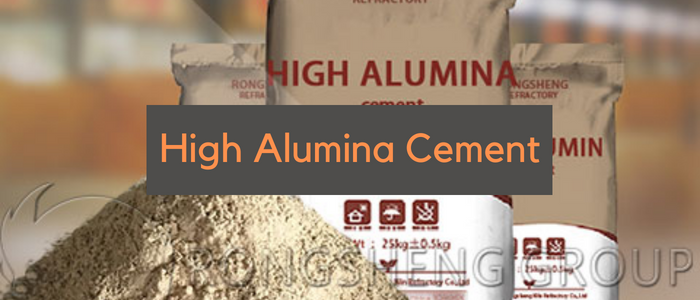High Alumina Cement
High Alumina Cement, or abbreviated as HAC, is also called as calcium aluminum cement. High Alumina Cement is made of limestone and bauxite. (Bauxite is a residual deposit formed by the weathering of rocks which have high aluminum content).
Limestone is ground with the bauxite and then the resulting dry mix enters the kiln. The kiln has a temperarure of 1600 oC which cause melting of the mix (the melting process is called fusion).
Molten clinker is allowed to cool down and forms granulated material. Clinker is then ground and mixed with gypsum until reaching the required fineness of cement.
Historical Background on High Alumina Cement
High Alumina Cement (HAC) was initially developed in the UK by Lafarge, one of biggest cement production companies, in 1925. At the beginning, it was frequently used for structures seving in marine environement since it was categorized as “Resistant to chemical attacks”. HAC gained its popularity in 1950s-1970s due to its rapid reactivity with water and initial strength gain. Pre-cast concrete companies depended heavily on HAC.
However, some issues occured in some structures built with HAC. Crystalline re-arrangement of HAC led to decreased strength capacity of concrete elements and weak resistance to chemical attacks when concrete comes to expoure with water for prolong periods. Five structural failures of roof beam happened in 1970s because of rain water.
UK decided then not to use High Alumina Cement any more, although buildings from the 50s and 60s constructed with HAC stood against the test of time. Yet, HAC continues to serve in non-structural applications using the name “Calcium Aluminate Cement (CAC)”
Note that currently, the Department of the Environment (DOE) Building Regulations Advisory Committee advises to conduct testing for strength and long-term durability in case of HAC using.
Chemical Composition on High Alumina Cement
The following table shows the composition of HAC. It shows a range of values for each oxide. Depending on the manufacturer, theses values can vary slightly.
| Compound | % in High Alumina Cement |
| Lime, CaO | 36 – 40% |
| Alumina, Al2O3 | 37 – 41% |
| Silica, SiO2 | 3 – 8% |
| Iron Oxide, Fe2O3 | 9 – 10% |
| Titanium, TiO2 | 1.5 – 2% |
| Magnesium Oxide, MgO | 1% |
| Others | 1% |
Benefits of HAC
- HAC provides sufficient times for mixing and placing activities since HAC has more than 3 hours initital setting time and 5 hours final setting.
- HAC has high resistance to elevated temperatures.
- HAC can be more suitable for casting in cold weather because it emits more early heat during hydration compared to ordinary cement.
- Better acid resistance.
- High early strength.
Some Limitations of HAC
- Not suitable for mass concrete applications because of the high heat emissions.
- More expensive compared to ordinary portland cement.
Applications of HAC
- One of the uses HAC is concrete of sewers because of its high resistance to sulfuric acid corrosion.
- Refractory concrete is another application for HAC due to its high strength under high temperature.
- In cases where rapid strength development is needed.
Read Also:
